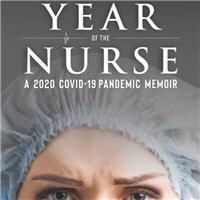Tag: coronavirus
Risk Factors for Severe COVID-19 in Children
Results identify children at potentially higher risk of severe disease who may benefit from COVID-19 prevention efforts, including vaccination. Rates of severe COVID-19 establish a baseline for monitoring changes in pediatric... read more
Mortality and Clinical Characteristics of MIS-C Associated with COVID-19
The clinical presentation and severity of Multisystem Inflammatory Syndrome in Children associated with COVID-19 (MIS-C) is widespread and presents a very low mortality rate in high-income countries. This research describes... read more
Effectiveness of Therapeutic Heparin vs. Prophylactic Heparin on COVID-19 Patients
In moderately ill patients with covid-19 and increased D-dimer levels admitted to hospital wards, therapeutic heparin was not significantly associated with a reduction in the primary outcome but the odds of death at 28 days... read more
Anti-interleukin Drugs Effect on COVID-19 Patients
Drugs targeting IL-1 or IL-6 did not shorten the time to clinical improvement in this sample of patients with COVID-19, hypoxic respiratory failure, low SOFA score, and low baseline mortality risk. Between April 4, and... read more
Ivermectin Not the Crisis It’s Claimed to Be
I can't remember any time when the U.S. Food and Drug Administration had to resort to the faux-folksy mode of expression to try to get its point across. We live in strange times. The FDA was responding, of course, to the... read more
SARS–CoV–2 Spike Impairs DNA Damage Repair and Inhibits V(D)J Recombination In Vitro
Severe acute respiratory syndrome coronavirus 2 (SARS–CoV–2) has led to the coronavirus disease 2019 (COVID–19) pandemic, severely affecting public health and the global economy. Adaptive immunity plays a crucial role... read more
Year of the Nurse: A 2020 Covid-19 Pandemic Memoir
This book is for everyone, nurse or otherwise, who is furious about how 2020 went down and how 2021 is going. #1 Amazon Bestseller in Critical & Intensive Care Nursing #1 Amazon Bestseller in Mental Health Nursing #1... read more

How protein-based COVID vaccines could change the pandemic
Unlike the relatively new technologies that the mRNA and viral-vector COVID-19 shots are based on, protein vaccines have been used for decades to protect people from hepatitis, shingles and other viral infections. To... read more
Not all COVID waves look the same. Here’s a snapshot of the Delta surge
Waves of Covid can give you an awful sense of déjà vu. As "Hot Vax Summer" gave way early to Delta-anxious fall, you could be forgiven for feeling a familiar sense of dread, not so different from what you’d felt before... read more
The Unsung Heroes: Respiratory Therapists
Working day after day, year after year, in a busy high acuity ICU, we all have become a "second family." The public doesn't hear much about respiratory therapists, especially during this COVID nightmare. But they have... read more
Mechanically Ventilated COVID-19 Patients: Long-term Survival Study
The long-term survival of mechanically ventilated patients with severe COVID-19 reaches more than 50% and may help to provide individualized risk stratification and potential treatments. 868 patients were included (median... read more
Fluvoxamine COVID-19 Treatment: Positive Impact on Patient Survival
Fluvoxamine treatment in addition to the standard therapy in hospitalised ICU COVID-19 patients could have a positive impact on patient survival. Further studies on the effects of fluvoxamine in COVID-19 patients are urgently... read more
Cardiac Injury in COVID-19
Patients with coronavirus disease 2019 (COVID-19) can present with a large panel of cardiac manifestations, including myocardial infarction with (type 1) or without (type 2) obstructive coronary artery disease, arterial or... read more
HIV and COVID-19 Increased Risk of Severe Outcomes
People living with HIV with detectable HIV viraemia, chronic comorbidities, and some subpopulations could be at increased risk of severe outcomes from COVID-19. These groups should be prioritised in clinical management and... read more
COVID-19-related Death in Fully Vaccinated People in Scotland – Characteristics and Risk
Vaccines are highly effective in preventing COVID-19 hospitalisations and deaths. COVID-19-related deaths in fully vaccinated individuals have, however, been reported. To inform public health strategy and vaccination... read more
Early COVID-19 Treatment with SARS-CoV-2 Neutralizing Antibody Sotrovimab
Among high-risk patients with mild-to-moderate COVID-19, sotrovimab reduced the risk of disease progression. No safety signals were identified. The results of this interim analysis of COMET-ICE indicate that sotrovimab... read more
Differential Dynamics of Peripheral Immune Responses to Acute COVID-19 Infection in Older Adults
In this study, peripheral blood mononuclear cells from young and old patients with COVID-19 were examined phenotypically, transcriptionally and functionally to reveal age-, time- and severity-specific adaptations. Gene... read more
Risk of Death in Hospitalised COVID‐19 Patients Is Not Reduced by Azithromycin Treatment
The effect of antibiotics with potential antiviral and anti‐inflammatory properties are being investigated in clinical trials as treatment for COVID‐19. We are certain that risk of death in hospitalised COVID‐19... read more
ABCDEF Bundle Implementation for ICU Patients During the COVID-19
Regardless of COVID-19 infection status, implementation rates for the ABCDEF bundle, for each element individually and an ICU diary were extremely low for patients without and with COVID-19 infections during the pandemic.... read more
CAPSID Randomized Trial Results for High-dose Convalescent Plasma in COVID-19 Patients
COVID-19 convalescent plasma (CCP) has been considered a treatment option for COVID-19. This trial assessed the efficacy of a neutralizing antibody containing high-dose CCP in hospitalized adults with COVID-19 requiring respiratory... read more
Impact on Mental, Physical and Cognitive functioning of a Critical care sTay during the COVID-19 pandemic
The ongoing pandemic could affect the duration, variety and severity of the mental, physical, and cognitive impairments intensive care unit (ICU) survivors and their families frequently present. We aim to determine the impact... read more
Neurological Complications After First Dose of COVID-19 Vaccines
Emerging reports of rare neurological complications associated with COVID-19 infection and vaccinations are leading to regulatory, clinical and public health concerns. We undertook a self-controlled case series study to investigate... read more









